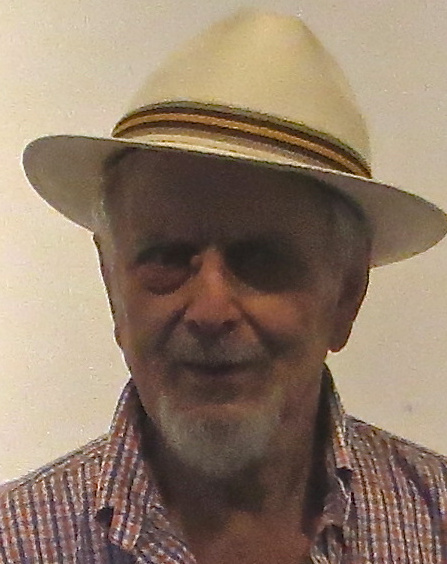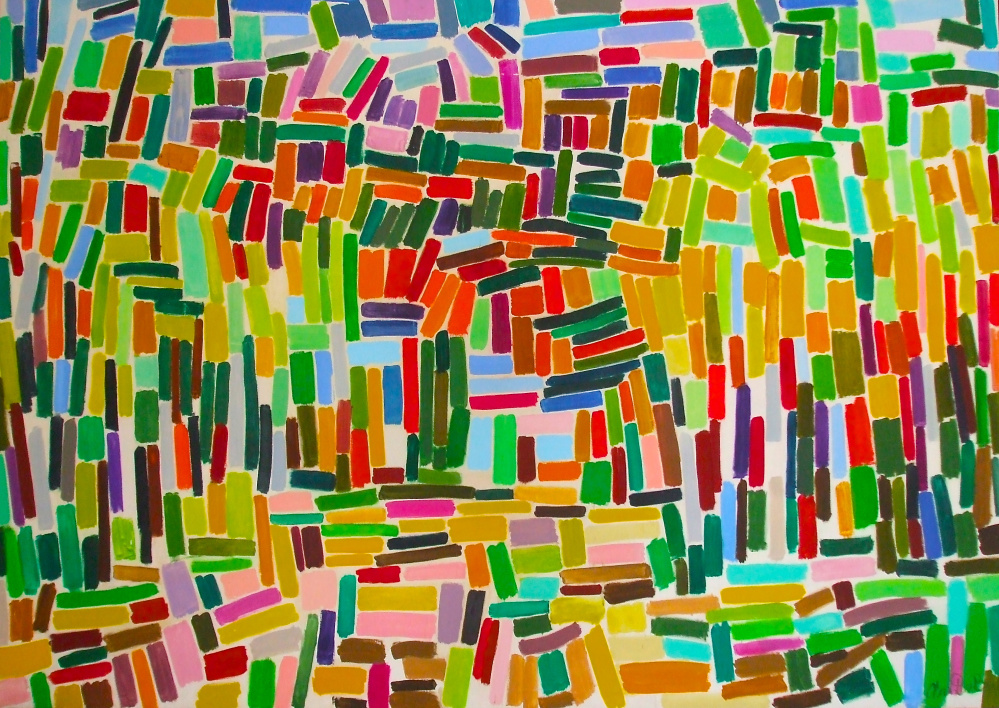Charles DuBack, a modernist painter who came to Maine because the fishing was good and stayed because he found that the environment informed his art, died early Thursday at age 89. He lived in Tenants Harbor and drew inspiration from the St. George River, the Katahdin woods and everything in between.
He is known for paintings that are full of color and energy, and for living a life dedicated to art. He once said he worked hard all the time because he felt guilty when idle.
“He was a total painter. He lived to paint and he painted to live,” said writer and critic Carl Little, who interviewed and wrote about DuBack on several occasions. “He put his whole heart and soul and body into his work.”
DuBack was born in Connecticut in 1926, volunteered for the Navy in World War II and began his art career in New York City, where he was part of a thriving modernist art scene. He shared an apartment with Alex Katz and Bernard Langlais. They all became working artists and eventually based their careers in Maine. DuBack came north to fish and to study at Skowhegan School of Painting and Sculpture in the mid-1950s.
“I really liked it up here,” he told art historian Susan Larsen in a 2004 interview for the Archives of American Art. “I just felt it was very sane, so to speak. So I liked the landscape, and since I had gone to Skowhegan, I was very familiar with the towns all throughout Maine. And I also liked to fish as a pastime, to get away and have a little sanity in my life. So I moved to Maine.”
He and his wife bought a house in Waldoboro and later settled in Tenants Harbor, where they raised their family. They lived in a home in the woods, where he cut trees and milled lumber that he used to build frames for his paintings.
He worked in a variety of media: oil, watercolors and collages.
While his peers received more critical acclaim than DuBack early in their careers, DuBack enjoyed attention in the last decade or so of his life. He received numerous gallery exhibitions across Maine, as well as a retrospective at the Center for Maine Contemporary Art in Rockport and an exhibition at the Portland Museum of Art. For many years, the PMA hung a large mixed-media piece, “The Coopers,” in a third-floor gallery. Little considers the painting, which also includes fabric, wood, rope and cardboard, “one of the stars” of the museum’s collection.
DuBack made the painting in 1970, and likely based it on a photograph. It depicts a dozen coopers, who made barrels and pails from planks of wood, and bound them with hoops. The kegs and casks were used for transporting rum, gunpowder, nails and other goods.
In later years, DuBack made colorful paintings with short, choppy brush strokes.
Wes LaFountain, director of the Woodman Museum in Dover, New Hampshire, is showing a survey of 60 years of DuBack’s work through Nov. 15. DuBack’s career followed an arc from geometric abstraction, figuration, realism and then a loosening of the brush strokes that tended toward abstract – though DuBack rejected that description.
“By the time I encountered his work (in 2000), his technique was one of harmonious dashes of bright colors that, if you worked at it, you could discern, say, an osprey snagging a fish outside Charlie’s window overlooking the St. George River. Dramatic, activated surfaces.”
DuBack believed every square inch of the canvas was important, even the white spaces between the dashes of color.
When someone told him that a child could make similar paintings, DuBack was delighted.
“Kids are the only honest people left,” he told the Maine Sunday Telegram in a 2003 interview. “When a kid paints a painting, he paints what he sees. It’s all from the heart. … There are a lot of people who push paint, but you pay a price for that, because it doesn’t have a soul. To me, painting is very real. It lives on its own, and that’s what I strive for – to make a painting a living work. It has to have a soul.”
Curators around Maine lamented DuBack’s death. Yvette Torres, a gallery owner who has shown DuBack’s work in recent years, called him a respected and uncompromising painter. “We will miss his presence. The arts community in Maine is diminished by his passing,” she said.
LaFountain compared DuBack’s stature to Maine painters Stephen Pace, Joe Fiore, William Thon and Neil Welliver – significant painters from an important time, he said. LaFountain knew DuBack well, and enjoyed listening to him talk about being an artist. “He cared immensely for what he felt art should be about,” LaFountain said.
A few years ago, DuBack told his friend that he didn’t care about showing art or being recognized when he was young. But as he hit his mid-80s, he cared.
“But now, I want to be recognized,” he told LaFountain.
In the end, he was.
Copy the Story Link
Send questions/comments to the editors.





Success. Please wait for the page to reload. If the page does not reload within 5 seconds, please refresh the page.
Enter your email and password to access comments.
Hi, to comment on stories you must . This profile is in addition to your subscription and website login.
Already have a commenting profile? .
Invalid username/password.
Please check your email to confirm and complete your registration.
Only subscribers are eligible to post comments. Please subscribe or login first for digital access. Here’s why.
Use the form below to reset your password. When you've submitted your account email, we will send an email with a reset code.